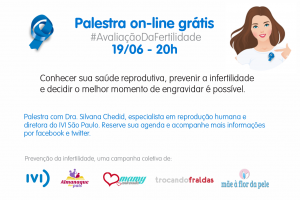Many women still have difficulty getting pregnant nowadays. What many don’t know is that some simple exams like FSH and ultrasound can turn those attempts into real possibilities. Ultrasound is the most efficient, accessible, and affordable way to visualize the ovaries. The ovaries are the organs responsible for ovulation, and it is in them that the number of eggs a woman produces during her formation, still in the womb, is concentrated. Yes, women are already born with their ovarian reserve ready. Unlike men, who produce sperm throughout their lives, ovarian limitation can be a problem for women who choose to get pregnant later.
However, not all cases of late pregnancy are problematic. It all depends on the health of the ovaries and the number of antral follicles present. Antral follicles? These are the encapsulated eggs, as if they were packed inside the ovaries. They start being stimulated from the beginning of active puberty in adolescent women. There they will stay until the FSH stimulation arrives. With this hormonal stimulation, the follicles start to grow and develop to the exact size needed to be released and then fertilized. Women are born with an ovarian reserve of about 1 million antral follicle capsules, but only a small portion of this amount will actually be released as mature eggs capable of being fertilized.
How Many Eggs Are Available to Fertilize Throughout Life?
During a woman’s reproductive life, only 400 eggs are actually used. That’s why ultrasound, besides checking the health of the ovaries, can also diagnose their development. Furthermore, ultrasound can also measure the existence of antral follicles in the ovaries. The fewer a woman has, the lower her ovarian reserve will be. Consequently, she may have trouble getting pregnant due to this hormonal decrease.
The problem is that this ovarian reserve can suddenly drop. Moreover, it can also be negatively affected 
Ultrasound will determine the number of eggs she still has, and then the doctor will work according to her ovarian reserve. If it is too low, more complex resources such as IVF, for example, may be chosen. If the follicle count is still satisfactory, there is more material to work with, allowing for simpler procedures.
The reliability of ultrasound exams for checking antral follicles should be done through a 2D ultrasound. However, 3D ultrasound will provide more precise results. Consult your doctor and get a complete evaluation. Check the follicles through ultrasound and also have a hormonal test based on FSH to check your ovarian reserve and determine your reproductive health.
On June 19th, Dr. Silvana Chedid will give an online lecture on fertility. To sign up, visit this website and register. You can also find more information on websites participating in the June Infertility Month campaign. Among them:
Mãe à Flor da Pele Almanaque dos Pais Blog IVI Mamy Antenada See also: Methods to Get Pregnant – Menopur and Ovidrel Can Help
Photo: Foxtongue











